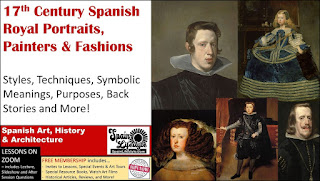We see them sitting under chairs in cafés, popping out of handbags and catching frisbees at the beach. If you are lucky enough to have a dog as a pet then they are there to welcome you home. We see them in today’s
modern world and accept them just so.
However, reading this book opens up one's mind to a greater appreciation of these animals. Spanish DOGS by Karla Ingleton Darocas gives readers a new understanding of where
dogs came from, their roles throughout Spanish history, social culture and their relevance in
the development of humanity.
Perhaps you have been in an art gallery and admired a painting and noticed a dog in the scene
and then walked on without a further thought? After reading Karla's book, this won't happen again. In this book Karla cherry-picks the best of Spanish
artwork and reveals that dogs are often more than just a decorative element.
Karla brings the art scene to life,
answering the questions: What kind of dog it is? Who is it with, and why is it there? Is there a secret
message, and what is the artist trying to convey? Karla combines her passionate knowledge of the artwork together with the dog breed and places it in the context of centuries of Spanish history.
Technically, this book is clearly written. Chapters are broken down into small bites with headings and photos that stir the imagination, allowing you to dip in and out as it suits. This book gives more than facts and figures, it gives knowledge and understanding. After
reading it you will have an appreciation for the dogs of Spain, no matter where you may find them in the world today.
- Janet Jager, Switerland




.png)
